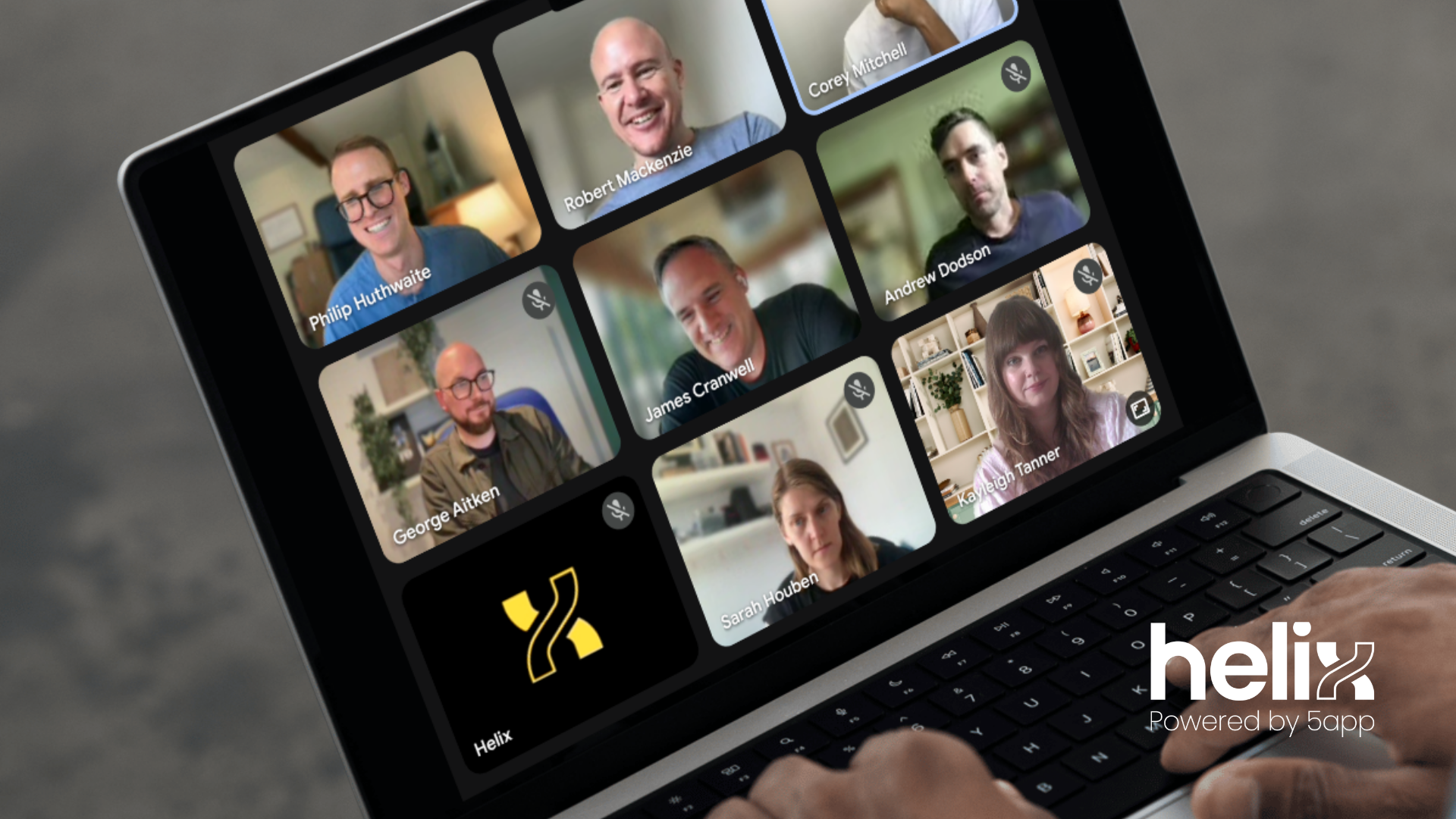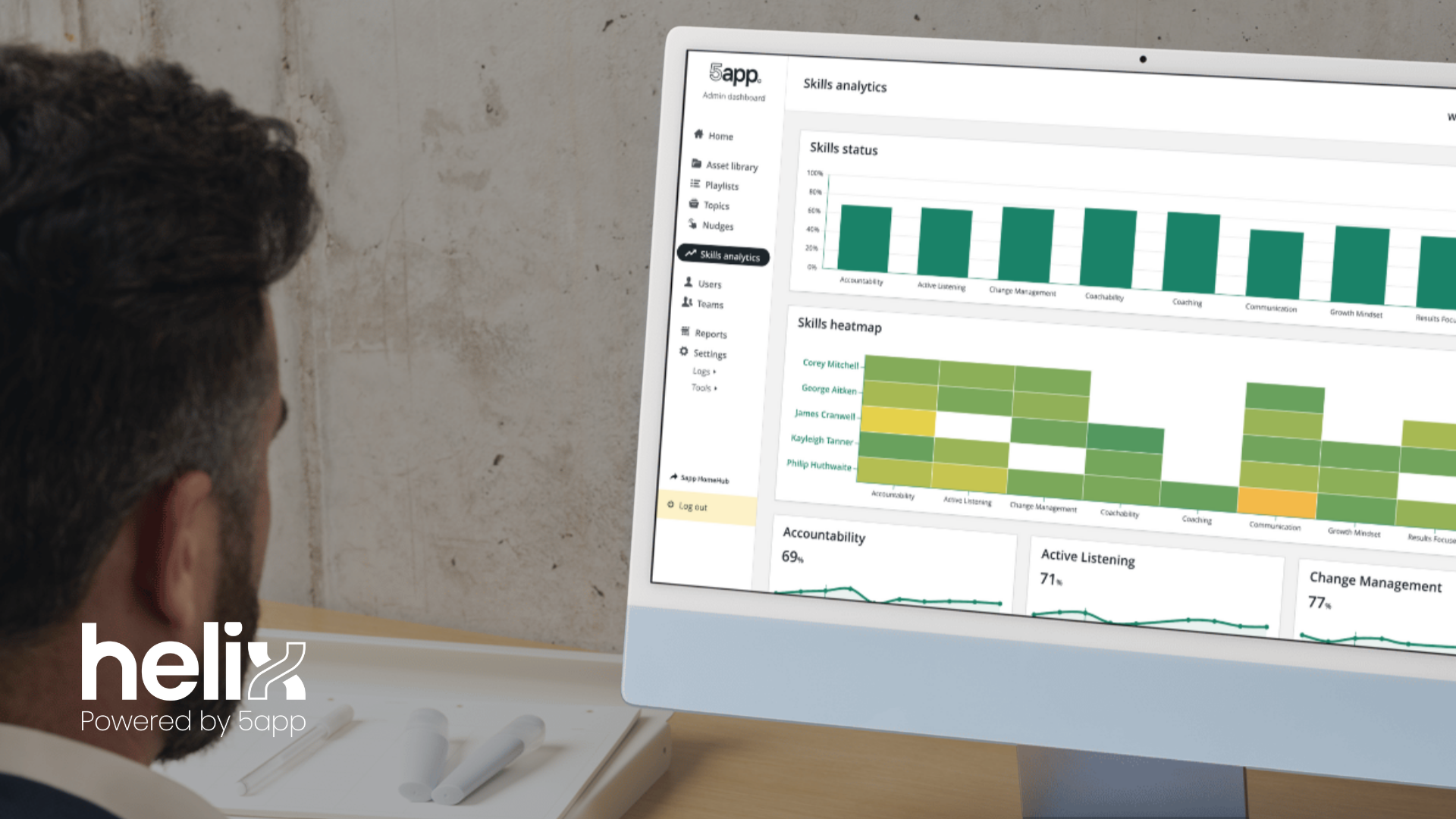Not all skills are made equal – especially where measurement is concerned. Below, we're going to take a look at nine of the hardest soft skills to measure, including accountability, coaching and strategic vision, alongside the limitations of traditional soft skills measurement and the modern solution for effective skills tracking. This is particularly useful for HR, L&D and people leaders who are trying to assess behavioural skills without reducing them to meaningless scores.
In Hemsley Fraser’s 2025 L&D Impact Survey, it’s revealed that there’s growing demand for better dashboards, learning analytics and skills measurement in the L&D community…
… and we can’t say we’re surprised!
For too long, L&D teams have had to make do with whatever data they can get, whether or not it shows the real impact of their hard work (spoiler alert: it rarely does).
And this is before we start thinking about the types of skills we want our employees to develop. It’s relatively straightforward to measure the acquisition of hard skills – a simple assessment will usually reveal whether or not someone can code, speak French or use a new piece of machinery.
But what about when we want to measure soft skills? Completing an elearning course about active listening doesn’t tell us if someone has improved their communication skills, and even acing an end-of-module quiz can’t show whether or not the employee is actually using the skills from the course.
Let’s take a look at nine of the hardest skills to measure, and how we can start to actually measure them beyond simple completion rates and multiple-choice quizzes.
When skills are easier (or harder) to measure
Skills are easier to measure when they are technical, standardised and produce clear, observable outputs. It's relatively straightforward to assess whether someone can use a system, follow a defined process or complete a task to a required standard. This includes things like learning another language, coding or mastering a piece of machinery.
Skills become harder to measure when they rely on judgement, emotional intelligence, values or context. These skills don't show up consistently and are often most visible in moments of pressure or uncertainty. Accountability, for example, may only be apparent when something goes wrong, while active listening can vary depending on psychological safety and power dynamics.
Another key difference is repeatability. Technical (or hard) skills can usually be demonstrated on demand, whereas behavioural skills must be observed across multiple interactions and over time. Imagine trying to display your coachability on demand! A single meeting or feedback moment is rarely enough to draw reliable conclusions, and soft skills should be tracked and monitored over time.
This distinction matters because it explains why traditional assessments work well for some skills but fall short for others. Behavioural skills require pattern-based evidence from real work, not one-off scores or snapshots.
What are the limitations of current soft skills measurement approaches?
If you’ve ever tried to use an elearning course or a workshop to measure the effectiveness of your soft skills training, you’ll know it’s virtually impossible. Anyone can click the right options in a quiz, then go back to their day-to-day role and never apply any of their learnings. In fact, simply knowing or even understanding what you should do doesn’t necessarily result in actually adopting those behaviours – in other words, how can we be sure that the skills we’ve ‘learned’ are being applied?
Until now, it’s been virtually impossible to measure most soft skills. Manager observations are one option, though assessments will often be based on one or two observation periods, which isn’t a representative sample of someone’s skills, and doesn’t allow for continuous development – it’s just a snapshot of a single meeting, conversation or presentation.
Manager observations are also open to bias. We’ve all had managers who just don’t really like us, or managers who display obvious favouritism, meaning it’s likely that bias will seep into any skills assessments.
1. Accountability
Accountability is all about taking responsibility for decisions, actions and outcomes. It can often be spotted in the presence of phrases like ‘That’s on me’ or ‘I’ll take care of that’, and behaviours such as solution seeking, building a culture of responsibility and owning up to mistakes. Deflecting blame or ‘pointing the finger’ at others typically indicates a lack of accountability.
2. Coaching
Any good manager should be good at coaching their employees, and a good coach isn’t a dictator. Coaching means asking open-ended questions, giving feedback and guiding employees to find their own solutions, which can be observed in team meetings and, most likely, one-on-one conversations. To measure coaching skills, you should be looking out for things like checking in with employees on their growth, open discussions about how to solve problems and proactively offering feedback, and ensuring the manager doesn’t use a one-size-fits-all approach for everyone.
3. Coachability
Sounds similar to coaching, but coachability is all about being on the other side of the coaching relationship! Some people are more ‘coachable’ than others – that means being open to feedback and constructive criticism, and following through on advice from others. Asking open questions like ‘What can I do better?’ or ‘How would you have tackled this challenge?’ and signalling that they will implement suggested improvements are good signs that someone is coachable. However, responding defensively or never requesting feedback can indicate that someone is showing lower levels of coachability.
4. Active listening

An employee may be able to take a course on active listening, but that doesn’t mean that they will necessarily apply their learnings in their day-to-day roles. Genuine active listening can be spotted entirely through an employee’s behaviours, such as asking insightful follow-up questions, verbally confirming understanding and not interrupting, as well as in their body language (such as nodding and turning their body towards the speaker).
5. Communication
Communication is such a nebulous skill that it can feel almost impossible to hone someone’s communication skills through formal training. Just because someone knows how to communicate clearly, that doesn’t mean they actually do it – so once again, we must turn to observing behaviours to get a feel for someone’s soft. For instance, do people truly listen when they speak? Does everyone understand what they mean? Do conversations flow naturally, or are they stilted, awkward or filled with interruptions and clarifications?
6. Strategic vision
Strategic vision is particularly important for business leaders, who need to define and articulate an inspiring future direction for the team. To excel in this skill, a leader must evoke passion, hope and motivation by painting a big-picture vision that resonates with employees. The way a leader speaks and acts will reveal their strategic vision – simply completing a course or correctly answering a few multiple-choice questions doesn’t tell us anything, but real vision statements and future focus speak volumes.
7. Growth mindset
A growth mindset is vital for any business leader. Displaying a growth mindset indicates that someone is keen to improve their skills and is open to new challenges, and they will most likely have a focus on personal and team development. This shows up in meetings and conversations as a focus on learning, acknowledgement of progress across the team and encouraging experimentation. If someone seems hesitant to tackle new challenges or seems stuck in their ways, they may not yet be displaying a growth mindset.
8. Results focus
Being results focused may not feel like a skill at first glance, but it’s actually extremely important for modern businesses. Results-focused individuals aren’t just doing things for the sake of it – they’re constantly turning to data for evidence that what they’re doing is working, setting targets and tracking progress. It can’t be measured through traditional assessments or quizzes, but the good news is that it’s easy to spot in conversation and written communication. You’ll hear results-focused individuals setting deadlines, defining targets and constantly referring back to metrics and concrete numbers, as well as celebrating achievements with the team.
9. Change management
Everyone deals with change differently, and change management could be considered as the ‘practical’ arm of resilience. Much like strategic vision, change management is an important skill for leaders, and when you know what you’re looking for, it can be easy to spot in day-to-day business conversations. For instance, do leaders clearly communicate change plans? Do they answer employee questions? How do they deal with resistance and pushback? Spotting these real-world behaviours is key to understanding someone’s mastery of change management.
.png?width=360&height=240&name=Soft%20skills%20content%20in%20a%20super%20simple%20platform%20(1).png)
Looking to improve your team's soft skills? Check out our Plug & Play solution, combining Hemsley Fraser's award-winning content with your very own intuitive 5app Hub!
The hardest soft skills to measure
In summary, nine of the hardest soft skills to measure are:
- Accountability
- Coaching
- Coachability
- Active listening
- Communication
- Strategic vision
- Growth mindset
- Results focus
- Change management
This is because they sit at the intersection of behaviour, perception, context and intent – in other words, there aren't typically 'countable' outputs to measure, so they can't be measured using traditional methods.
Typically, there has been little way to know for sure if someone's soft skills are improving... that is, until now.
How do I measure tricky soft skills?

We believe there’s a better way to measure soft skills than relying on biased manager observations or inflated self-assessments – Helix.
Helix is our AI skills intelligence platform, designed to help businesses of all shapes and sizes finally track and measure those all-important soft skills.
Instead of relying on traditional skills measurement methods, you simply invite Helix to your meetings on Microsoft Teams, Google Meet or Zoom. It then sits in the background and measures the soft skills and behaviours it detects throughout the call, before sending participants an analysis of their strengths, growth areas and trends.
Alongside the Core 9 soft skills outlined above, there are 80+ additional skills available to measure right within Helix. We can also add extra custom skills to align with your organisation's objectives, helping you measure what matters with no need for expensive, time-consuming manual human observations.

You can then keep track of soft skills over time, allowing you to spot trends, skills gaps and growth opportunities across individuals, teams and the wider organisation. Post-meeting summaries, roundup emails and 24/7 access to a personalised dashboard tells you and your learners everything you need to know about your skills for focused, ongoing development over time.
We're also aware that measuring soft skills doesn't always mean scoring them. In many cases, qualitative evidence and behavioural patterns are more useful than numerical ratings. That's why we allow users to choose whether or not skills are scored, or whether qualitative feedback is displayed alone to support your preferred approach to skills tracking.
